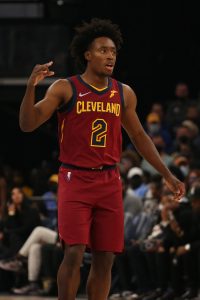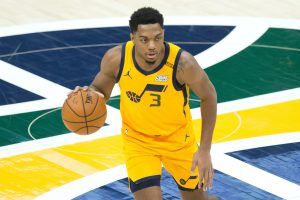Fans of lottery-bound NBA teams will be keeping a close on the league’s reverse standings down the stretch because of the effect they’ll have on the draft order and lottery odds for the 2022 first round.
However, it’s not just the first round of the draft that’s worth keeping an eye on. Those reverse standings will also dictate the order of the draft’s second round, and an early second-round pick can be nearly as valuable as a first-rounder.
Traded first-round selections will ultimately be more valuable than any second-rounder, but it’s still worth taking a closer look at some traded 2022 second-rounders that project to be quality picks.
[RELATED: Traded Second-Round Picks For 2022 NBA Draft]
Here are a few of those traded picks:
From: Detroit Pistons
To: Toronto Raptors
Current projection: No. 32
Back in 2018, the Bulls gained the right to swap 2022 second-round picks with Detroit in a trade involving Jameer Nelson. Chicago eventually transferred that right to San Antonio as part of last summer’s DeMar DeRozan‘s sign-and-trade, and the Spurs transferred it to Toronto as part of the Thaddeus Young/Goran Dragic trade at this month’s deadline.
The Pistons are currently on track to finish the season with a bottom-three record, so the Raptors are a good bet to be picking the No. 31-33 range this June.
From: Houston Rockets
To: Indiana Pacers
Current projection: No. 33
The Cavaliers first acquired Houston’s 2022 second-round pick in a 2019 deadline deal involving Alec Burks and Iman Shumpert, then sent it to Indiana this month in the Caris LeVert trade.
Like the Pistons, the Rockets comfortably hold a bottom-three spot in the NBA right now, so the Pacers will likely have a top-three pick in the second round of the 2022 draft to aid their retooling efforts.
From: Indiana Pacers
To: Orlando Magic
Current projection: No. 35
Although the Pacers control Houston’s second-rounder, they won’t have a second pick near the top of the round, having traded away their own 2022 second-rounder to Milwaukee in their 2019 sign-and-trade deal for Malcolm Brogdon. The Bucks flipped that pick to Orlando during the 2020 draft in a package for the No. 45 pick in the ’20 draft, which they used to select Jordan Nwora.
The Magic’s own 2022 second-rounder currently projects to be the No. 31 pick, so Orlando could control two of the top five picks in the second round this year.
From: San Antonio Spurs
To: Cleveland Cavaliers
Current projection: No. 37
The Spurs traded their 2022 second-round selection to Utah all the way back in 2016 as part of a Boris Diaw salary dump. The Jazz controlled that pick up until December 2019, when they flipped it to Cleveland as part of their deal for Jordan Clarkson — the Cavaliers have held it since then.
The Cavs have traded away their own 2022 first-round pick (top-14 protected), so San Antonio’s second-rounder could end up being the best pick Cleveland owns in this year’s draft.
 A top-14 pick who does not meet the starter criteria will receive a qualifying offer equal to the amount the 15th overall pick would receive if he signed for 120% of the rookie scale.
A top-14 pick who does not meet the starter criteria will receive a qualifying offer equal to the amount the 15th overall pick would receive if he signed for 120% of the rookie scale.

